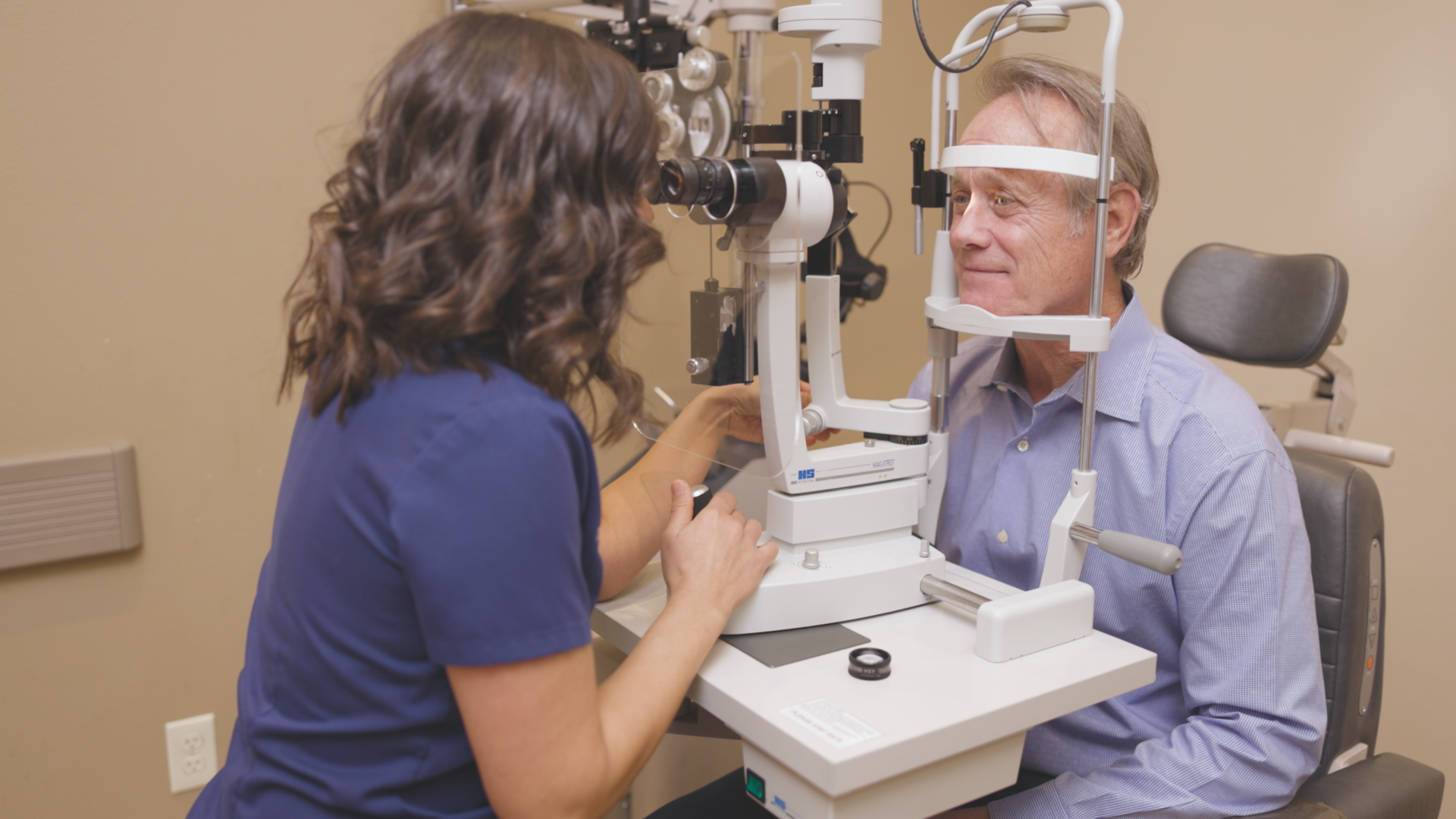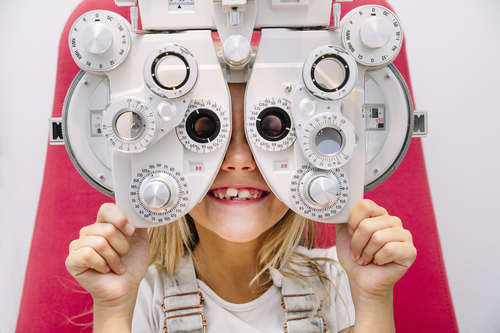Checking Out the current Technical Innovations in Optometry and What They Mean for Optometrists
In the ever-evolving field of optometry, current technical developments are improving exactly how specialists approach eye treatment. From the precision of Optical Comprehensibility Tomography to the nuanced insights offered by AI-driven analysis tools, these advancements are setting new requirements in client assessment and therapy. Teleoptometry is positioned to redefine availability, making certain that competence goes beyond geographical limitations. As these improvements permeate the technique, optometrists are confronted with the obstacle of welcoming these devices to enhance individual outcomes. The concern remains: exactly how will these technical shifts redefine the functions and duties within the profession?
Advancements in Diagnostic Devices
Advancing the field of optometry, technologies in diagnostic tools have revolutionized the method eye treatment specialists evaluate and identify aesthetic problems and ocular problems. The past decade has actually observed substantial technical improvements, allowing more extensive and accurate assessments. Optical Comprehensibility Tomography (OCT), as an example, gives high-resolution cross-sectional pictures of the retina, enabling the very early detection of diseases such as glaucoma and age-related macular deterioration. This non-invasive imaging method has ended up being vital in modern optometric method.
An additional key technology is the introduction of innovative corneal topography systems, which map the surface curvature of the cornea with accuracy. These tools are especially advantageous for suitable get in touch with lenses and diagnosing corneal conditions. Digital retinal imaging has actually changed typical ophthalmoscopy, providing thorough, panoramic views of the retina that facilitate complete aesthetic evaluations.
The growth of wavefront aberrometry has actually likewise been vital, enabling the analysis of refractive mistakes with unmatched precision (Eye Doctor). This modern technology helps in customizing rehabilitative lenses and enhancing medical results for refractive surgeries. Jointly, these analysis improvements empower eye doctors to supply remarkable individual treatment, making sure early intervention and tailored treatment techniques, eventually improving aesthetic health and wellness results
AI in Individual Administration
Building on the foundation of advanced diagnostic devices, the unification of expert system (AI) in client management represents a transformative jump for optometry. AI systems are significantly utilized to improve effectiveness, accuracy, and personalization in patient treatment. By examining huge amounts of data, AI can identify patterns and predict possible ocular problems, allowing optometrists to customize interventions better. This capability is important in managing persistent eye conditions such as glaucoma and diabetic retinopathy, where early discovery and constant surveillance are crucial.
Furthermore, AI-driven systems help with structured client communications and administrative procedures. Automated organizing, online appointments, and customized follow-up strategies not only enhance patient contentment but additionally optimize time administration for practitioners. These systems can triage clients based upon the urgency of their conditions, making certain that those in crucial demand receive timely interest.
In addition, AI enhances decision-making by supplying eye doctors with evidence-based referrals and treatment pathways. By integrating data from digital wellness documents, AI tools provide understandings that educate clinical decisions, minimizing the risk of errors and boosting patient outcomes. As AI remains to evolve, its duty in person monitoring will likely broaden, improving the landscape of optometric care.
Breakthroughs in Retinal Imaging
In the realm of optometry, retinal imaging has observed impressive technological improvements that are improving diagnostic capacities and client treatment. Advancements such as Optical Coherence Tomography (OCT) and fundus photography have reinvented exactly how optometrists examine the retina and imagine.
Boosted imaging modalities like OCT angiography are more refining analysis precision. This non-invasive strategy maps blood flow in the retina, offering essential insights into vascular wellness without the requirement for color injections. Furthermore, flexible optics technology is being incorporated into retinal imaging systems to remedy ocular aberrations, supplying unmatched photo quality. Such developments promote the identification of min retinal changes that can indicate disease development.
Furthermore, developments in artificial intelligence are enhancing retinal imaging by making it possible for automated analysis of big datasets. These systems aid eye doctors in identifying patterns a measure of pathology, thus boosting diagnostic precision and efficiency. Collectively, these technologies are transforming retinal imaging right into a cornerstone of contemporary eye care, improving end results and expanding therapeutic possibilities.
Teleoptometry's Expanding Duty
Teleoptometry is significantly ending up being an essential component of eye care, driven by innovations in data and analysis devices. As optometry welcomes electronic transformation, teleoptometry helps with remote examinations, enabling optometrists to prolong their services beyond traditional boundaries. This is specifically advantageous in underserved and rural locations where accessibility to specialized eye treatment is typically restricted. By leveraging high-resolution video conferencing and advanced retinal imaging, eye doctors can perform thorough eye examinations from afar, making sure timely diagnosis and therapy.
The combination of expert system (AI) additional improves teleoptometry, making it possible for the evaluation of visual information and aiding in the discovery of ocular problems such as glaucoma and diabetic retinopathy. AI-powered formulas can rapidly translate intricate imaging data, providing eye doctors with additional reading beneficial understandings that strengthen professional decision-making.
Additionally, teleoptometry sustains connection of care with seamless combination with electronic wellness records (EHRs), enabling eye doctors to preserve thorough client backgrounds. This guarantees that patients get personalized and constant treatment even when talking to various practitioners.
Regardless of these advantages, obstacles stay, consisting of making sure data safety and security and handling individual expectations. Teleoptometry represents a substantial stride towards even more available, efficient, and patient-centered eye care. As technology advances, its role is poised to increase additionally.

Future Patterns in Eye Care
A myriad of innovative trends is readied to reshape the future of eye care, driven by technical advancements and the developing requirements of clients. One significant trend is the integration of expert system (AI) in diagnostics, which assures to boost the precision and efficiency of eye assessments. AI algorithms can evaluate vast quantities of information from retinal pictures, potentially spotting conditions like diabetic person retinopathy and glaucoma earlier than typical approaches.
In addition, customized medicine is gaining grip in optometry, with hereditary testing informing tailored treatment strategies. This technique intends to enhance patient end results by tailoring treatments to private genetic accounts. Wearable innovation, such as smart get in touch with lenses, is likewise coming up, supplying real-time tracking of intraocular pressure or sugar levels, hence supplying continuous insights right into read review systemic and eye wellness.
The fostering of augmented truth (AR) and digital reality (VR) in training and patient education is an additional emerging fad. These innovations offer immersive experiences that can improve understanding and skills both for patients and optometrists. As these fads evolve, eye doctors must stay abreast of technical developments to give innovative treatment, ensuring enhanced patient results and fulfillment in the vibrant landscape of eye treatment.
Final Thought

Jointly, these analysis improvements encourage eye doctors to supply exceptional patient care, making sure very early intervention and customized therapy techniques, ultimately improving aesthetic health end results.

As these innovations proceed to develop, eye doctors must adapt and integrate them right into technique, ultimately enhancing operations efficiency and elevating the requirement of eye treatment supplied to people.